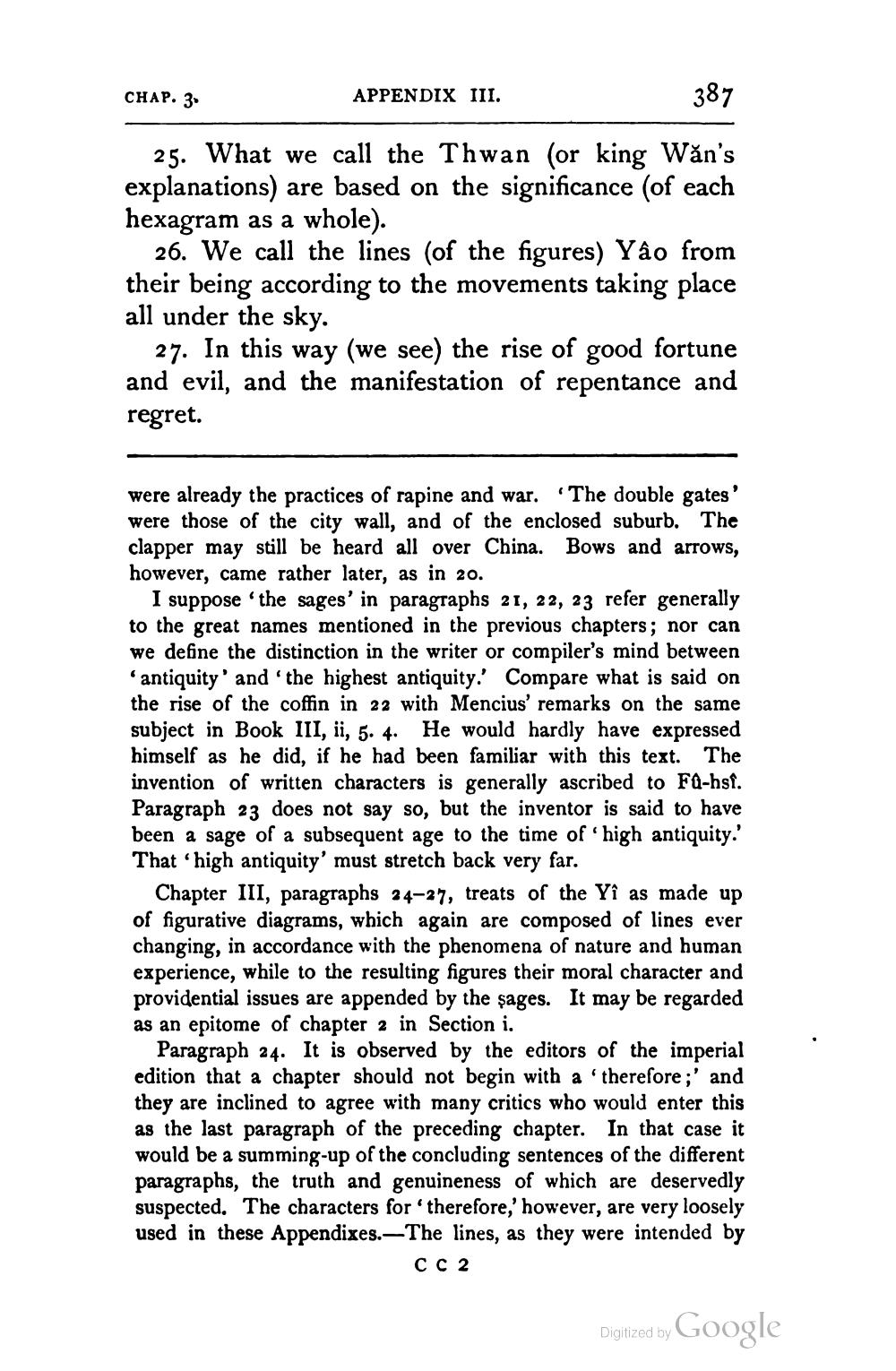________________
CHAP. 3
APPENDIX III.
387
25. What we call the Thwan (or king Wăn's explanations) are based on the significance (of each hexagram as a whole).
26. We call the lines (of the figures) Yâo from their being according to the movements taking place all under the sky.
27. In this way (we see) the rise of good fortune and evil, and the manifestation of repentance and regret.
were already the practices of rapine and war. The double gates' were those of the city wall, and of the enclosed suburb. The clapper may still be heard all over China. Bows and arrows, however, came rather later, as in 20.
I suppose the sages' in paragraphs 21, 22, 23 refer generally to the great names mentioned in the previous chapters; nor can we define the distinction in the writer or compiler's mind between 'antiquity' and 'the highest antiquity.' Compare what is said on the rise of the coffin in 22 with Mencius' remarks on the same subject in Book III, ii, 5. 4. He would hardly have expressed himself as he did, if he had been familiar with this text. The invention of written characters is generally ascribed to FG-hsf. Paragraph 23 does not say so, but the inventor is said to have been a sage of a subsequent age to the time of high antiquity.' That 'high antiquity' must stretch back very far.
Chapter III, paragraphs 24-27, treats of the Yî as made up of figurative diagrams, which again are composed of lines ever changing, in accordance with the phenomena of nature and human experience, while to the resulting figures their moral character and providential issues are appended by the sages. It may be regarded as an epitome of chapter 2 in Section i.
Paragraph 24. It is observed by the editors of the imperial edition that a chapter should not begin with a 'therefore;' and they are inclined to agree with many critics who would enter this as the last paragraph of the preceding chapter. In that case it would be a summing-up of the concluding sentences of the different paragraphs, the truth and genuineness of which are deservedly suspected. The characters for 'therefore,' however, are very loosely used in these Appendixes.—The lines, as they were intended by
CC 2
Digitized by Google




